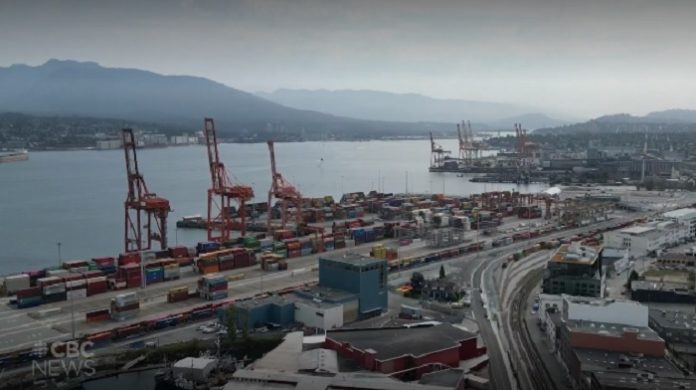
-
Drewry and Freightos both report declining container rates on the Asia-United States trade lanes amid weak demand
-
Striking dock workers and their employers in Vancouver BC and Prince Rupert ports are back at the negotiating table after suspending the discussions for a new labor contract for four days, but the strike has not yet impacted rates
-
Drewry expects spot prices to fall further this week as peak season buying fails to appear
Asia-US box rates’ dip last week are expected to continue this week amid soft demand for goods, with Drewry’s composite World Container Index shedding 1.3% and the Freightos Baltic Index dipping between 1% and 4%, the two consultancy and research platforms said.
Discussions in Pacific Canada between striking dock workers and their employers have resumed after staying away for four days from the negotiation table, said a statement issued on Saturday by the British Columbia Maritime Employers Association (BCMEA).
BCMEA and the International Longshore and Warehouse Union Canada (ILWU Canada) met on Saturday, supported by federal mediators, the statement said. The talks had stalled on Tuesday and the two sides broke off negotiations.
Media reports said forwarders and shippers have not yet begun to divert traffic away from the ports of Vancouver and Prince Rupert, but are expected to do so if the talks fail this week.
Vancouver and Prince Rupert, along with 28 smaller ports on the coast of British Columbia, have been shut down by striking workers since July 1, after contract negotiations between ILWU and BCMEA broke down.
Asia-US box rates dipped slightly last week and are now more than 20% below 2019 levels to both coasts.
Asia-North Europe prices rose 2% last week to about $1,300/FEU, just below 2019 levels.
Maersk announced a significant rate hike up to $1,900/FEU planned for July 31 on this lane.
But with minimal volume growth on the ex-Asia lanes so far, and not a lot of optimism for a big peak season surge in demand just yet, rate increases will likely only succeed if carriers manage capacity much more strictly than they did for June’s unsuccessful transpacific GRI attempt.
Freightos Terminal data for Shanghai-Vancouver show container rates have gone unchanged since the strike started. It said a prolonged shutdown and significant enough diversions could push rates up at alternate ports.
Drewry’s composite World Container Index fell 1.3% to $1,474.32 per 40-ft (FEU) container last week.
The index is now 86% below the peak of $10,377 reached in September 2021. It is 45% lower than the 10-year average of $2,688, indicating a return to more normal prices. However, the index remains 4% higher than average 2019 (pre-pandemic) rates of $1,420.
The average composite index for the year-to-date is $1,797/FEU, $891 lower than the 10-year average. The composite index is 79.1% lower than the same week in 2022.
Freight rates on Rotterdam-New York plunged 25% to $2,003/FEU. Likewise, rates on Los Angeles-Shanghai fell 14% to $876/FEU. Also, New York-Rotterdam spot rates slipped 7% or to $736/FEU.
Rates on Rotterdam-Shanghai shed 5% at $544/FEU, and Shanghai-Genoa eased 2% to $1,993/FEU. On the reverse, Shanghai-Los Angeles rates rose 4% or $57 to $1,638/FEU. Rates on Shanghai-New York and Shanghai-Rotterdam surged 3% and 2% to $2,590 and $1,345/FEU container, respectively.
Drewry expects East-West spot rates to decline on most routes in the next few weeks. The maritime research and consultancy platform said 37 cancelled sailings have been announced by ocean liners across the transpacific, transatlantic and Asia-North Europe & Mediterranean between weeks 28 (July 10-July 16) and week 32 (August 7-Aug-13 Aug) in a strategy to stabilize rates.
The cancellations represent 5% of the 673 total scheduled sailings, Drewry said. It said 59% of the blank sailings will occur in the transpacific eastbound, 22% on Asia-North Europe and Med, and 19% on the transatlantic westbound trade.
Over the next five weeks, OCEAN Alliance has announced 11 cancelations, followed by THE Alliance with 10 and 1 cancellation announced from 2M. During the same period, 15 blank sailings have been implemented in non-Alliance services.
Overall, there has been a significant improvement in carrier service reliability, as reflected in the chart above, over the next five weeks, 95% of ships are expected to sail as scheduled.
RELATED READ: USWC port workers union-employers clinch deal




